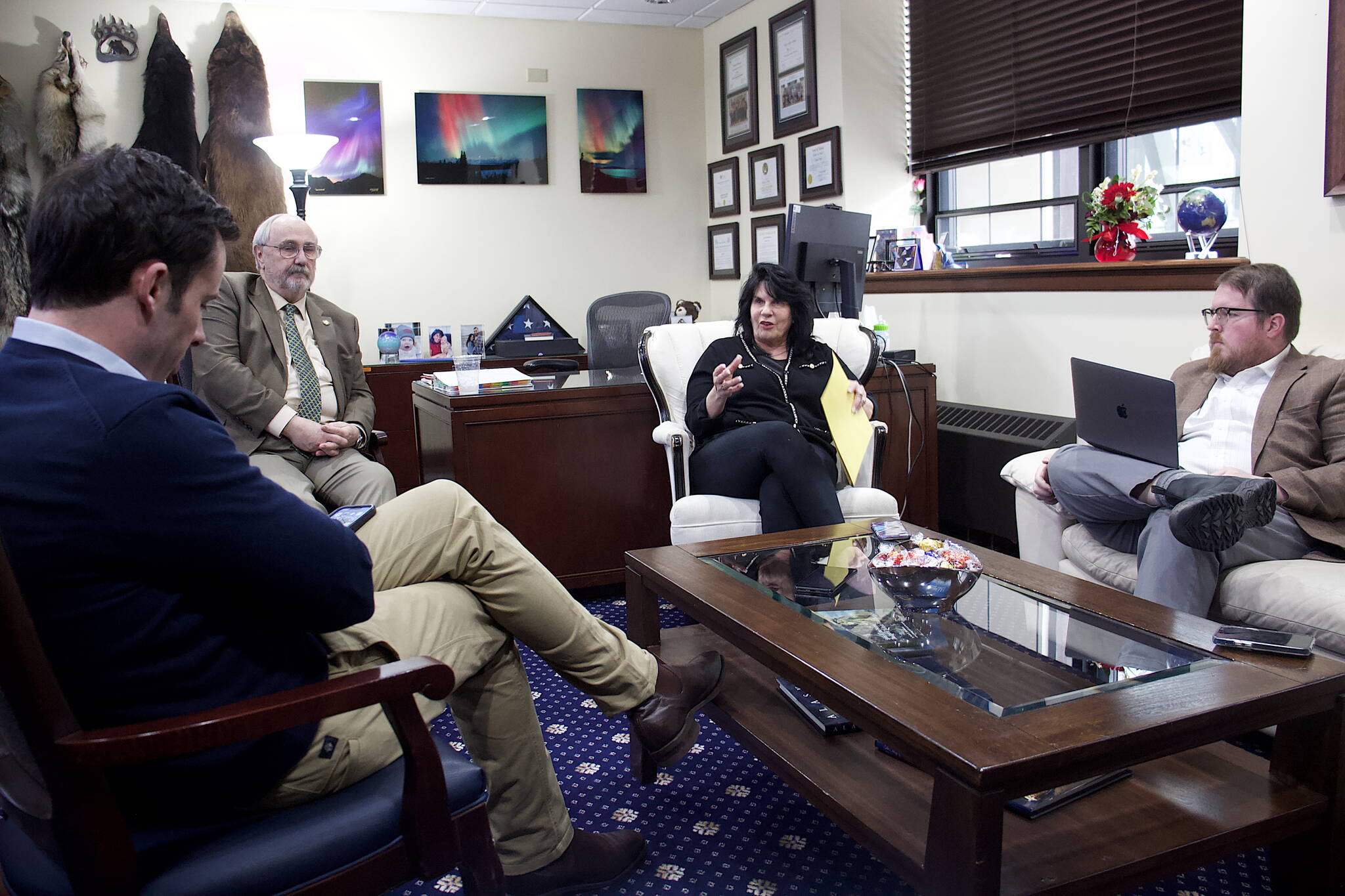This story has been updated with additional information from legislative action on Monday.
A cap on state spending, purportedly at about current levels, is a priority of the Republican-led House majority heading into the final days of the legislative session, and is “tied together” with a proposal by the bipartisan Senate majority to cut spending by drastically shrinking Permanent Fund dividends, according to House leaders.
But even within the House majority there is skepticism a cap can be passed that won’t force immediate and sizable spending cuts, or some other action such as lowering PFDs.
The emphasis on a spending cap comes as lawmakers are trying to pass a budget — and perhaps at least some elements of a long-range fiscal plan — before the scheduled adjournment date of May 17. But the PFD is the biggest difference between each chamber’s majority caucus, with the House seeking a $2,700 dividend that results in a likely budget shortfall of about $600 million while the Senate is proposing a $1,300 dividend that results in a surplus of about $90 million.
House members favoring a spending cap say it is one step of several toward a sustainable spending plan — if not this year then in future years. But while that proposal is tied to the Senate’s PFD proposal, it’s not a situation of trading one for the other, said state Rep. Craig Johnson, an Anchorage Republican who chairs the House Rules Committee, which controls which bills go to the floor for a vote.
“I don’t think it’s a trade-off because I don’t think the spending cap is something we can trade,” he during a press briefing with House Speaker Cathy Tilton, a Wasilla Republican, on Friday afternoon. Rather, he said, a cap sends an important message to constituents “that we’re not going to go out and spend your money willy-nilly.”
Tilton said the House majority isn’t absolutely ruling out the Senate’s so-called “75-25” proposal that diverts 75% of spendable Permanent Fund earnings to state programs and the rest for dividends, compared to the House majority’s “50-50” plan that divides the money evenly. She said there also have been discussions about some in-between percentage for dividends, although “we’re still working out what those details would look like.”
Two pieces of legislation imposing a spending cap — a bill and corresponding proposed constitutional amendment — imposing a spending cap were heard by the House Finance Committee on Monday.
Rep. Will Stapp, a Fairbanks Republican sponsoring the proposals, states the cap “would effectively set (the) limit near current spending levels” by basing the amount available in the average of the preceding five years’ GDP. The limit in the bill would be 11% of that average — which could be increased with a two-thirds vote of the Legislature — but not above the 14% of the average that would be set by the constitutional amendment.
The proposals allow exemptions from the cap for some expenses including PFDs, disaster declarations and voter-approved bonds.
But Rep. Bryce Edgmon, a Dillingham independent who co-chairs the finance committee, said he doesn’t see a bill getting passed by the Legislature that doesn’t include PFDs in the cap limitation, which puts most of the current assumptions about its financial impacts in question.
“I think it’s pretty obvious, but to have a spending cap in place as contemplated here with the bills in front of us, something would have to give,” he said. “Whether it’s the PFD, whether it’s spending and the operating or the capital budget side, something’s going to have to give in order to meet that spending cap threshold, or triggering of sort of supermajority vote.”
Numerous other questions were raised by committee members about fiscal projections presented by Alexei Painter, director of the Legislative Finance Division. Rep. Andy Josephson, an Anchorage Democrat, for example, asked how the assumptions about the state’s GNP growth rate might be affected if limits on state spending reduces employment of some occupations such as teachers, which then leads to lower economic activity for housing and other items they would spend money on.
Painter acknowledged the state does not officially project GNP growth.
“We’re sort of making up this 1.5% number,” he said. “It’s based on historical averages. We don’t have a very good idea because there’s no official projection. So I, I don’t feel comfortable speculating about what influences it.”
The bill is being held for future hearings, with amendments from committee members due by 5 p.m. Wednesday.
A similar pair of proposals introduced in the Senate has been dormant since a single committee hearing in early April. Senate leaders, mirroring Tilton’s comments, have said they are willing to consider all proposals. But they have also emphasized they will not pass a budget that contains a deficit or taps into the state’s $2.4 billion Constitutional Reserve Fund — which requires a three-fourths vote of the Legislature — to fund PFDs.
A spending cap was among the recommendations of a bipartisan Fiscal Policy Working Group in 2021, along with a revised formula for calculating PFDs and implementing new revenue sources.
• Contact Mark Sabbatini at mark.sabbatini@juneauempire.com


